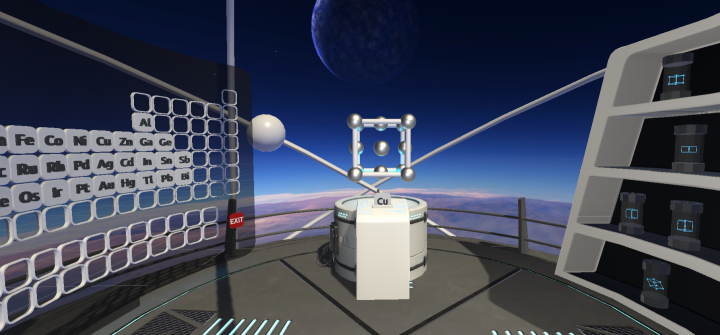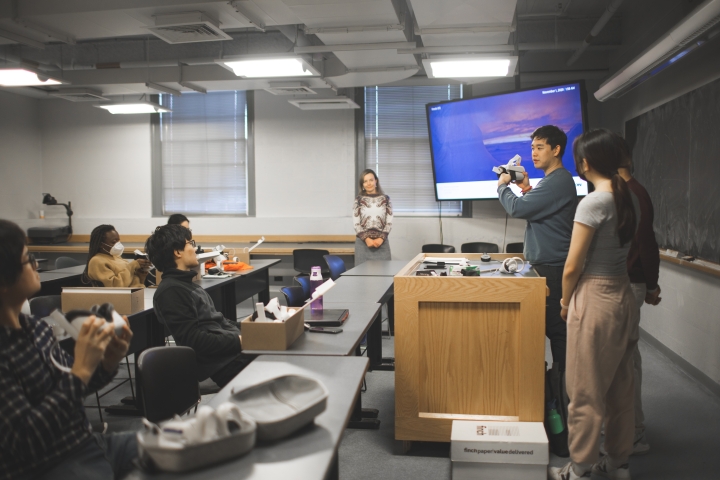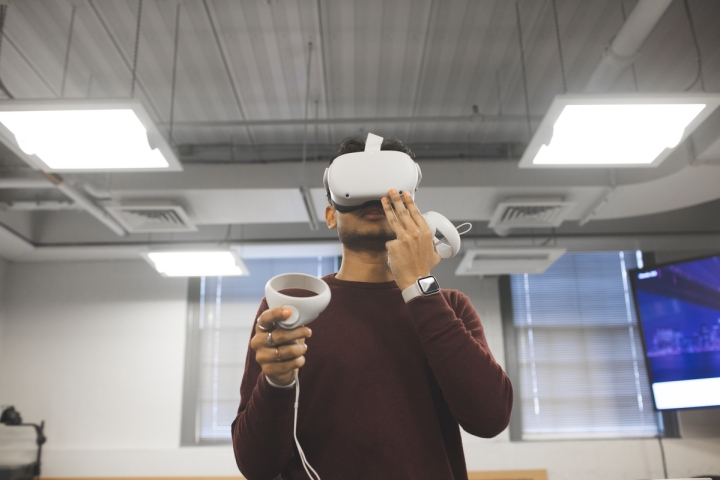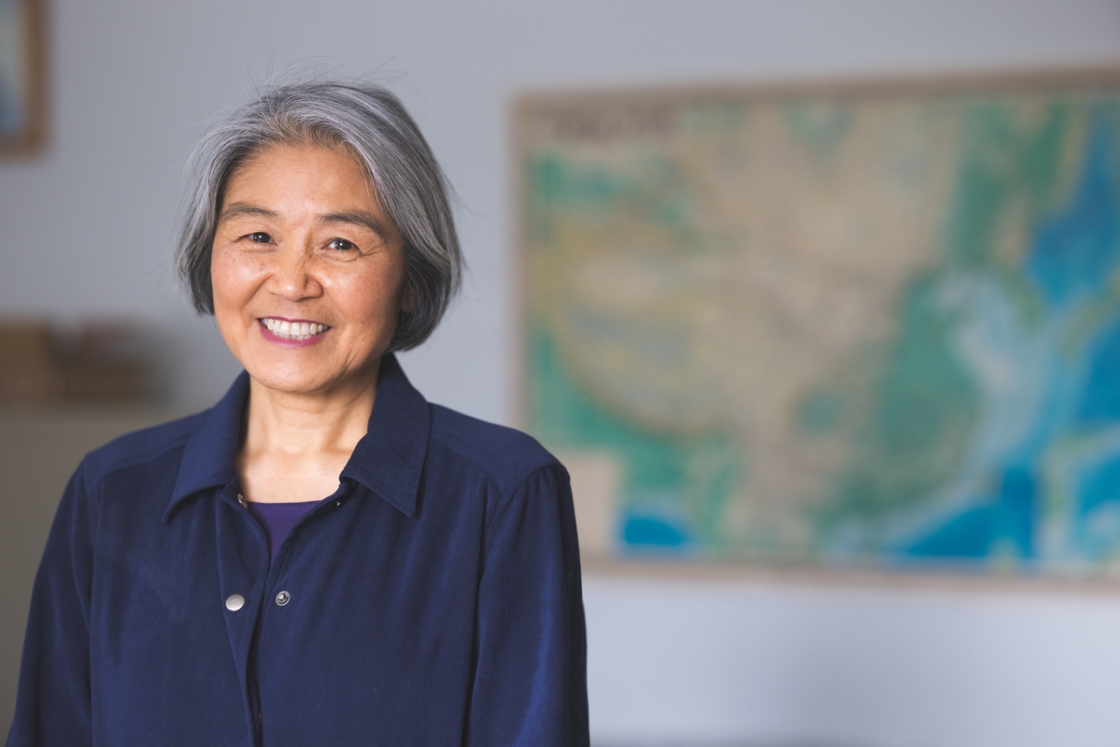The familiar ball-and-stick models in chemistry classrooms may soon give way to snazzy virtual reality headsets.
In January, graduate students in chemistry professor Katherine Mirica’s Functional Nanomaterials: Synthesis and Applications course tried them on for size in class.
Introducing them to the structures of materials at the atomic scale was Veridium, a virtual reality app developed in-house by students at Dartmouth’s Digital Applied Learning and Innovation Lab.
Sporting headsets and armed with controllers, the students entered a virtual classroom dominated by a large periodic table of elements. To test the newly developed app, they activated the tile for the element copper, and its atoms arranged in a special cubic pattern appeared before them. The controllers allowed students to play with the virtual model, stretching and rotating it at will, as an audio lesson played along.

“For many solids, their crystal structure—how their atoms and molecules are arranged in space—determines their properties and functions,” says Mirica.
For instance, graphite and diamond are chemical twins, both made of carbon atoms. Yet, on account of how the atoms are stacked together, the former is opaque, soft, and slippery, while the latter is known for its extraordinary hardness and brilliance.
Visualizing these structures in three dimensions can be challenging, says Mirica, who routinely sees students struggle with picturing these arrangements in class. And it only became more difficult for Mirica when classes went remote in 2020 during the pandemic and she was teaching the introductory General Chemistry course.
“I encourage students to work with molecular models in class, but doing those demonstrations for them over Zoom was limiting,” she says.
She turned to an existing virtual reality platform, using a pilot grant from the Neukom Institute to purchase and mail headsets to the 100 students in her class. Her students enjoyed the experience, but the teaching modules did not cover advanced topics at the university level.
Mirica and three professors from Michigan State, California State University, and the University of Berlin set out to create their own virtual reality app. The DALI Lab seemed like a great partner for the project, says Mirica, who had seen some of its work in the VR space.
Putting finishing touches to the nearly two-year long effort of creating Veridium are a team of six—program manager Apurva Srivastava ’24; developers Julian Wu ’22, Devon Starr ’25, and Alexander Huang Menders ’25; design mentor Jennifer Xu ’25; and designer Anna Wu, who is pursuing a master’s in computer science at the Guarini School of Graduate and Advanced Studies.
They have finished building many more modules besides the one on copper that the class tested. Based on user feedback, they have worked to make the VR interface more intuitive and easy to navigate.
“I am passionate about using VR as a tool to help students learn more effectively,” says Julian Wu, who has been part of the project since it began in 2021. He was excited to see Veridium in action in Mirica’s class, where he, along with Srivastava and Xu, assisted students as they navigated the app for the very first time.

“It was a very good experience, I really liked it,” says Patrick Damacet, a doctoral student at Guarini who came to Dartmouth from Beirut, Lebanon.
Damacet has studied crystal structures as a chemistry undergraduate. He remembers that it was difficult to imagine these 3D shapes based on images on a paper—he used YouTube videos to help him visualize them. “With this software, it is even better,” he says, because “it feels like you are with the molecules, you can hold them and turn them around to see them from different angles.”
For Mirica, VR offers a unique advantage in this context. “With 3D structures, teachers always wonder if students see what we see when we show a picture or model,” she says.
Veridium also include a mini quiz for each element that tests students’ understanding, providing instantaneous feedback to instructors. Building the interactive quiz elements was no easy task for the developers, says Julian Wu.
In the future, Mirica says, Veridium could be developed as a platform technology for visualization in 3D for a range of materials, making it a regular feature of chemistry, engineering, and physics classrooms.
“Chemistry can be very abstract sometimes, and it’s nice to have something visual and interactive to ground the learning,” says Anna Wu, who joined the team as a designer after trying out an early version at Technigala, DALI Lab’s quarterly event. “Veridium is a great demonstration of the potential of VR in an educational environment.”
Other students who worked on the Veridium virtual reality app at the DALI Lab over the past two years include Jason Acosta ’24, Brett Kidman ’20, Vico Lee ’24, Will McCall ’23, Emma Kallman ’22, Brendan Keane ’23, Sayuri Magnabosco ’21, Andy Kotz ’24, Wylie Kasai ’22, Benedict Tedjokusumo ’23, Alyssa Anderson ’23, Daniel Lubliner ’25, Gia Kim ’22, Amon Ferri ’23, Maria Mora ’22, and Megan Liu ’22.

